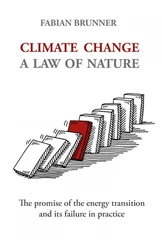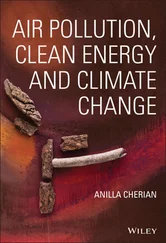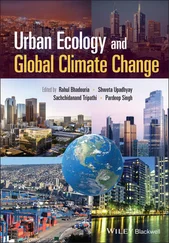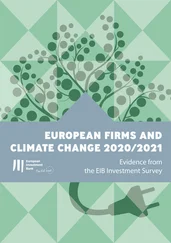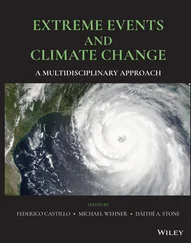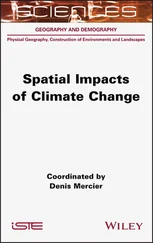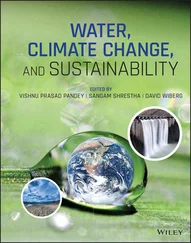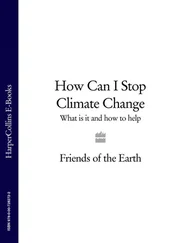
© John Wiley & Sons, Inc.
FIGURE 2-3:The relationship between carbon dioxide and the oceans.
Why people couldn’t survive without plants
You may not have realized back in elementary school that when you were reading about photosynthesis, you were actually getting the basics of modern climate science. ( Photosynthesis occurs when plants take in energy from the sun and carbon dioxide from the atmosphere and turn it into oxygen and sugars.) Figure 2-4 may jog your memory.
Trees are the planet’s biggest and most widespread plants, and the forests are wonderful carbon sinks.
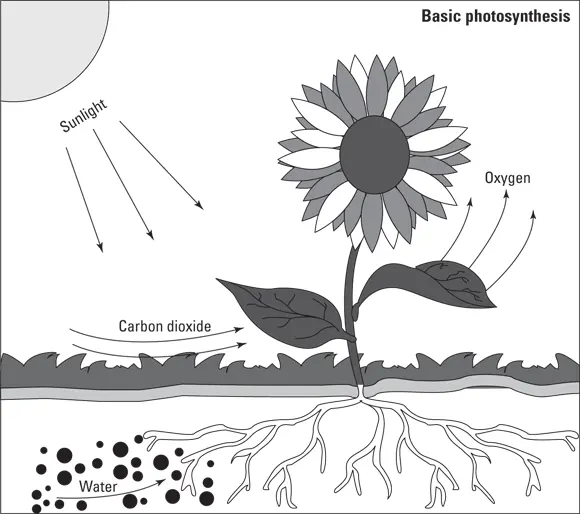
© John Wiley & Sons, Inc.
FIGURE 2-4:The process of photosynthesis.
 The most effective carbon-trapping forests are tropical, such as those in Brazil and other South American countries. Most tropical forests are called rainforests (although not all rainforests are tropical). Rainforests grow in regions that get more than 70.9 inches of rain each year. Because of all the rain they get, these dense, rich forests are full of biodiversity. And because of the tropical climate, which is always warm, these tropical forests work year-round. The tireless work that these trees do to sequester carbon is just one of the reasons to protect the tropical rainforests.
The most effective carbon-trapping forests are tropical, such as those in Brazil and other South American countries. Most tropical forests are called rainforests (although not all rainforests are tropical). Rainforests grow in regions that get more than 70.9 inches of rain each year. Because of all the rain they get, these dense, rich forests are full of biodiversity. And because of the tropical climate, which is always warm, these tropical forests work year-round. The tireless work that these trees do to sequester carbon is just one of the reasons to protect the tropical rainforests.
Mangrove forests are another little appreciated forest ecosystem. They’re also tropical, but they’re rooted in water. Research shows they may actually be four times more effective in sucking up carbon than tropical forests on land. But they’re at risk. About a third of the world’s mangroves have been removed — mostly for tourism developments to create beaches and for farming shrimp in toxic shrimp ponds. Planting mangroves helps nature, creates homes for fish, protects coastal communities from big storms, and fights climate change. And unlike the forests on land, they can’t burn up because they live in water.
Forests in Canada, the United States, and Russia aren’t as effective at soaking up carbon because they take a rest in the winter but are still very important in the planet’s carbon balance. The northern forests make up for the reality of their seasonal work, through the relatively richer and deeper soils. Northern forests store more carbon in carbon reservoirs, even though tropical forests take up more carbon on an annual basis.
Grasslands also play an important role
About 40 percent of the Earth’s surface is grassland, mostly used for grazing animals. They aren’t only cattle — sheep, goats, yaks, camels, llamas and alpacas, and the people who tend to them all depend on grasslands. Grasslands are one of the most effective carbon sinks — the deep roots of grasses can store as much carbon as trees, and that carbon remains even when the grasses are grazed or burned off. Grasslands are rapidly being depleted by conversion to more intensive agriculture. But climate scientists now see their enormous value in the fight against global warming.
Soil also stores carbon. Plants draw in carbon dioxide and break it down into carbon, breathing the leftover oxygen into the atmosphere. The carbon makes its way into the soil through the plants’ root systems or when the plant dies. See Figure 2-5 for a diagram showing how soil and trees exchange carbon dioxide with the air.
 In this plant-soil relationship, most of the carbon is stored close to the top of the soil. Tilling the soil (mixing it up) exposes the carbon in the ground to the oxygen in the air, and these two elements immediately join to form carbon dioxide.
In this plant-soil relationship, most of the carbon is stored close to the top of the soil. Tilling the soil (mixing it up) exposes the carbon in the ground to the oxygen in the air, and these two elements immediately join to form carbon dioxide.
Altogether, vegetation and soil store about a billion metric tons of carbon every year, and another 1.6 billion metric tons move in and out between the land and the air. So far, the plants, animals and soil have packed away 3.3 billion metric tons.
Investigating humanity’s impact on the carbon cycle
A lot of the carbon dioxide in the atmosphere is natural (you’re breathing some out, right now), but human activities also contribute plenty of the gas (we discuss these activities in Part 2). Historically, the carbon dioxide that people put into the air was pretty much soaked up by the carbon sinks, and the amount of carbon dioxide that was around before people started building factories had been fairly steady since the beginning of human civilization.

© John Wiley & Sons, Inc.
FIGURE 2-5:How trees and soil work side-by-side with carbon dioxide.
Producing industrial amounts of carbon dioxide
Since the Industrial Revolution went into full swing around 1850, the amount of GHGs in the atmosphere has risen drastically. Due to burning fossil fuels, as well as clearing forests, people have almost doubled the carbon dioxide emissions in just over a century, and today, carbon dioxide levels are higher than they have ever been in recorded history (see Chapter 4for more about fossil fuels). In fact, atmospheric carbon dioxide levels are higher today — a 45 percent increase — than at any time in the past 800,000 years. (Carbon dioxide levels were much higher millions of years ago, however. We talk about the history of carbon dioxide levels in greater detail in Chapter 3.)
Carbon dioxide concentration levels are currently at about 412 ppm, and they rose at an average of 2 ppm per year between 2000 and 2021 because of increasing emissions due to human actions. On average, in the 1980s, globally, people put 7.2 billion metric tons of carbon dioxide emissions into the air every year — and those emissions have been increasing every year — now at 43 billion, per the Center for Climate and Energy Solutions. So many people are using so much energy, mostly in industrialized countries, that the amount of carbon that is being put into the air is knocking the carbon cycle off balance.
Plugging up the carbon sinks
The Earth’s carbon sinks, which used to be able to handle everything oxygen-breathing creatures could throw at them, aren’t able to keep up with humanity’s increased carbon dioxide production. Studies presented through the Intergovernmental Panel on Climate Change (IPCC) reports suggest a bunch of different possible consequences, ranging from a theory that new plants might appear that can soak up more carbon dioxide to the idea that carbon sinks may become full and may no longer be able to absorb any more carbon dioxide. Like anyone who works overtime, carbon sinks could become weaker as they soak up more carbon dioxide.
The ocean has stored carbon effectively in the past, but global warming is causing the oceans to do just the opposite. The top layers of the oceans — the top 2,300 feet (700 meters) have warmed a lot since 1900. That top layer is now 1.5 degrees Fahrenheit (0.83 degrees Celsius) warmer. Carbon dioxide is less soluble in warm water. The oceans push the carbon dioxide that they can’t dissolve into the air, instead. Data collected during the 1980s and 1990s suggested that both land and ocean sinks seemed to have kept up with growing emissions. However, more recent studies show that the carbon dioxide intake of some sinks, such as trees, is slowing down.
Читать дальше
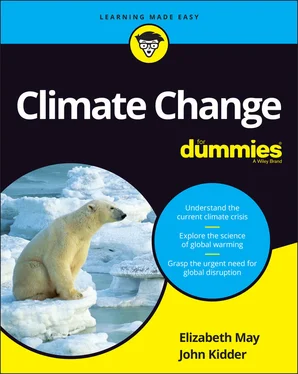


 The most effective carbon-trapping forests are tropical, such as those in Brazil and other South American countries. Most tropical forests are called rainforests (although not all rainforests are tropical). Rainforests grow in regions that get more than 70.9 inches of rain each year. Because of all the rain they get, these dense, rich forests are full of biodiversity. And because of the tropical climate, which is always warm, these tropical forests work year-round. The tireless work that these trees do to sequester carbon is just one of the reasons to protect the tropical rainforests.
The most effective carbon-trapping forests are tropical, such as those in Brazil and other South American countries. Most tropical forests are called rainforests (although not all rainforests are tropical). Rainforests grow in regions that get more than 70.9 inches of rain each year. Because of all the rain they get, these dense, rich forests are full of biodiversity. And because of the tropical climate, which is always warm, these tropical forests work year-round. The tireless work that these trees do to sequester carbon is just one of the reasons to protect the tropical rainforests.
